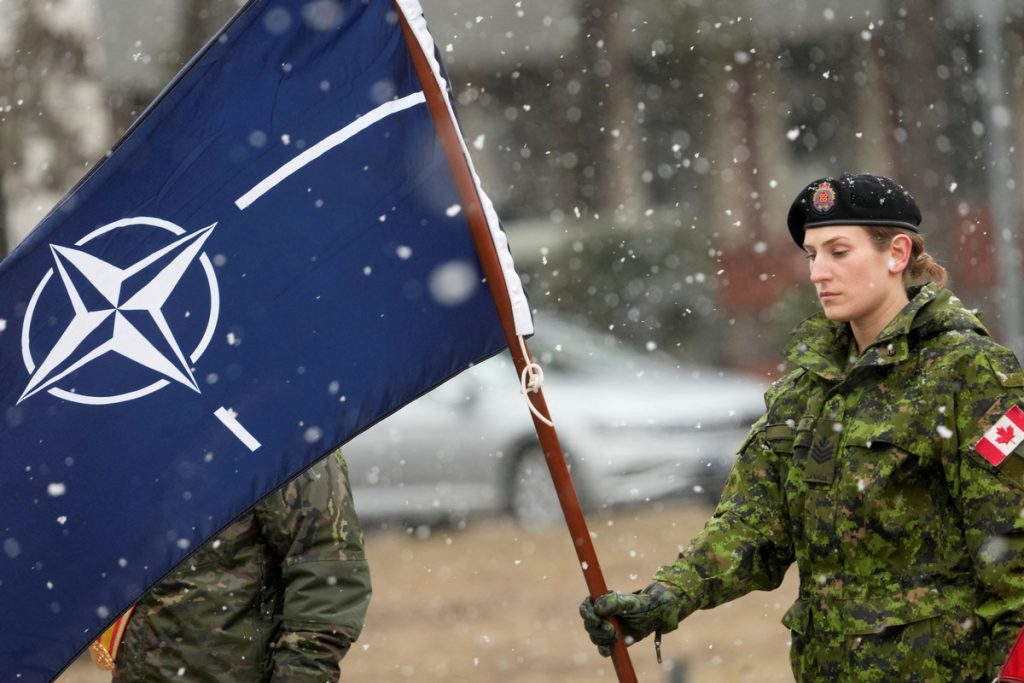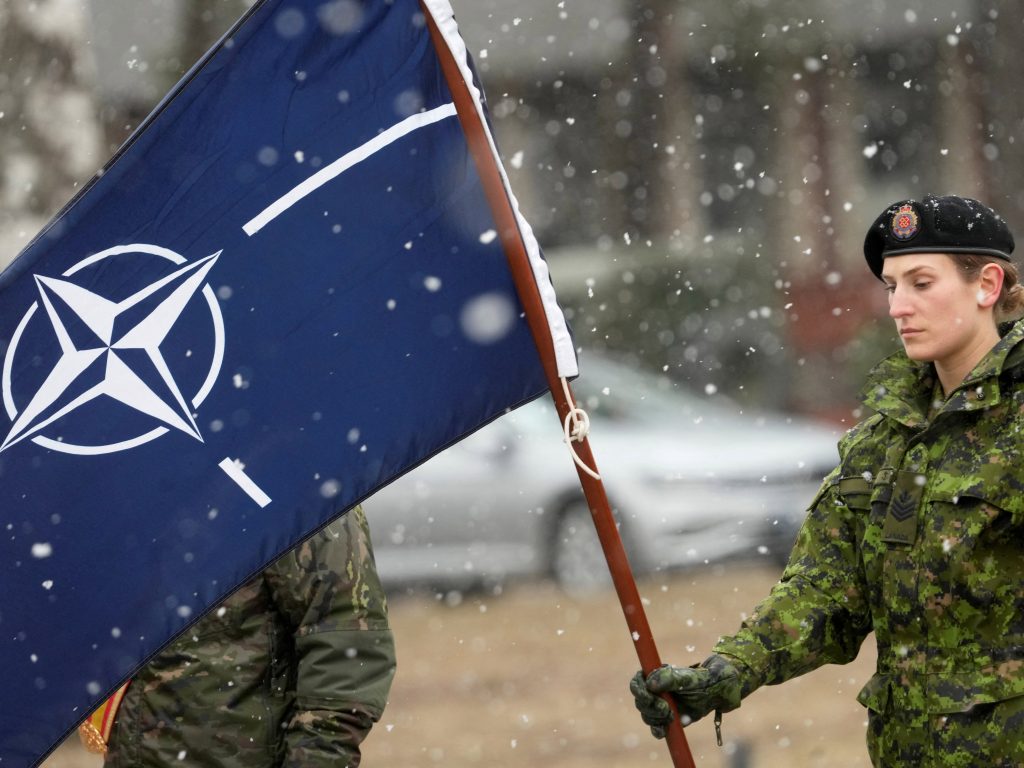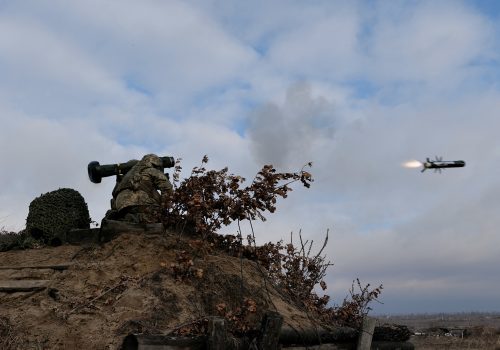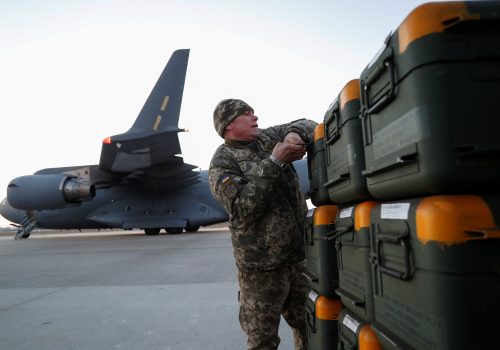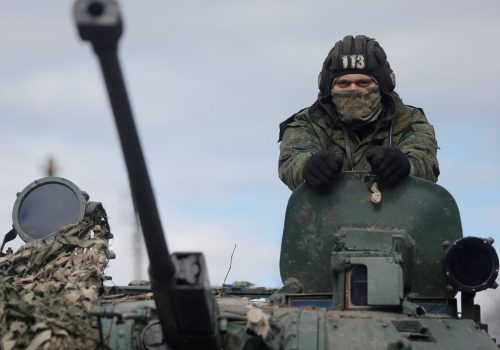
With Ukraine having repelled Russian forces near Kyiv, the Kremlin’s war of aggression has entered a new phase: a more limited offensive in eastern Ukraine. As the United States and its transatlantic allies and partners formulate fresh strategies for what will likely be a protracted conflict, there are several factors they must consider, senior officials and experts said at a recent Atlantic Council event.
The US objective is Russian “strategic failure”—militarily, politically and economically— US Assistant Secretary of Defense for International Security Affairs Celeste Wallander said at the May 2 conference, titled “Priorities for the NATO Summit and Security in Europe.” That would involve in the long term “holding the Russian leadership to account in front of its own population and in front of the global stage,” she said. Wallander’s comments expanded on US Defense Secretary Lloyd Austin’s recent statement that the United States “want[s] to see Russia weakened to the degree that it can’t do the kinds of things that it has done in invading Ukraine.”
What Russian accountability will look like is unclear at this point. However, US Senator Thom Tillis (R-NC), speaking at the conference, argued that the United States has to “look ahead to a regime change before we could ever have anything in the way of a productive working relationship with Russia,” and describing Russian President Vladimir Putin as “not fit to serve.”
At the same time, Michael Kofman, research program director at the Russia Studies Program of CNA, cautioned against treating Russia’s comprehensive strategic failure in the war as a foregone conclusion. Indeed, the “trend lines favor Ukraine,” he said. However, changes in Russia’s tactics such as full mobilization could lead to a longer, more drawn-out conflict, Kofman added, addressing the event ahead of the NATO summit scheduled for late June.
The United States and NATO must not learn the wrong lessons from the war, he said. The Russian military, despite taking a beating so far, still presents a real threat. “I’m worried that I’m going to have to spend a lot of years now arguing that [the Russian military] isn’t four feet tall,” said Kofman. When it comes to new defense investments, Alliance members should also avoid relying on broad conclusions about the effectiveness of capabilities in Ukraine, warned former Vice Chairman of the Joint Chiefs of Staff Gen (Ret.) James Cartwright.
The United States and NATO allies need to continue and expand their supply of ammunition and heavier artillery weapons that have been a key part of Ukrainian battlefield success against Russia, according to Kofman. Yet, nations supplying Ukraine must also take care that they do not deplete their own stocks of critical weapons systems too much, with the pipeline to produce and replace advanced weapons sent to Ukraine being “quite narrow” in many cases, as described by Kofman. The United States can play a critical role here as the “arsenal of democracy,” harking back to the role it played in World War II, some speakers suggested. US Senator Chris Murphy (D-CT) said that the United States was “going to have to look at ramping up production… to make sure that all of our allies have what they need” to supply Ukraine while maintaining their own supplies.
The Alliance will also need to make major adjustments to its strategy and posture in Eastern Europe, speakers said. Already, allies have shifted significant forces further east, making NATO’s conventional deterrence “the strongest that it has been… in our lifetimes” according to US Assistant Secretary of Defense for Strategy, Plans, and Capabilities Mara Karlin. Former Supreme Allied Commander Europe Gen (Ret.) Philip M. Breedlove added that NATO has to be ready to “seize the moment” and “move readiness and capability forward” in Europe. More ready and capable forces, including persistent, rotational US deployments to Eastern Europe will help move NATO from a deterrence by punishment posture to deterrence by denial, making it harder for any future Russian attack to take and hold NATO territory.
NATO will also move to finalize its new Strategic Concept this summer, the first new guiding strategy for the Alliance since 2010. “The 2022 edition will definitely be the most challenging,” said Alexander Vershbow, Atlantic Council distinguished fellow, former NATO deputy secretary general, and former US ambassador to Russia. Vershbow agreed with Breedlove, saying that the Strategic Concept should revamp NATO’s defense and deterrence posture by shifting more forces forward. Many of these forces, if and when they are deployed, will go to the Baltic states of Estonia, Latvia, and Lithuania—frontline nations that are some of the Alliance’s most vulnerable members. These countries have long been advocates for increased allied presence in the region. Speaking at the conference, Lithuanian Minister of National Defense Arvydas Anušauskas highlighted increased spending by the country on facilities to enable it to host larger numbers of allied forces in the future.
Throughout the discussion, panelists emphasized that the conflict and the new strategic circumstances that Russia has created in Europe will shape the security dynamic there for the foreseeable future, and the Untied States and its allies in NATO will need to remain focused and united to adapt to this challenge and ensure Russia meets strategic failure. In the words of Michael Kofman, “Security in Europe is an unfinished business, and to me this conflict reflects that.”
Watch the full event
Connor McPartland is an assistant director with the Atlantic Council’s Transatlantic Security Initiative, part of the Scowcroft Center for Strategy and Security.
Further reading
Thu, Apr 28, 2022
FAST THINKING: The US arms Ukraine for the long haul. Is it enough?
Fast Thinking By
Taken together, the $33 billion funding appeal and so-called Lend-Lease program will send a clear message to Russia.
Fri, Mar 11, 2022
Lend-Lease 2022: How the US can back Ukraine against Putin
UkraineAlert By Thomas S. Warrick
With Ukraine still in desperate need of more military aid to counter Vladimir Putin's invasion, it is now time for the United States to revive the Lend-Lease program signed into law eighty-one years ago on March 11, 1941.
Thu, Apr 21, 2022
Climbing the ladder: How the West can manage escalation in Ukraine and beyond
Report By Richard D. Hooker, Jr.
Russia’s invasion of Ukraine and NATO’s response increase the possibility of purposeful or inadvertent escalation in Europe. Understanding how these dynamics might impact the war and further degrade transatlantic stability is critical.
